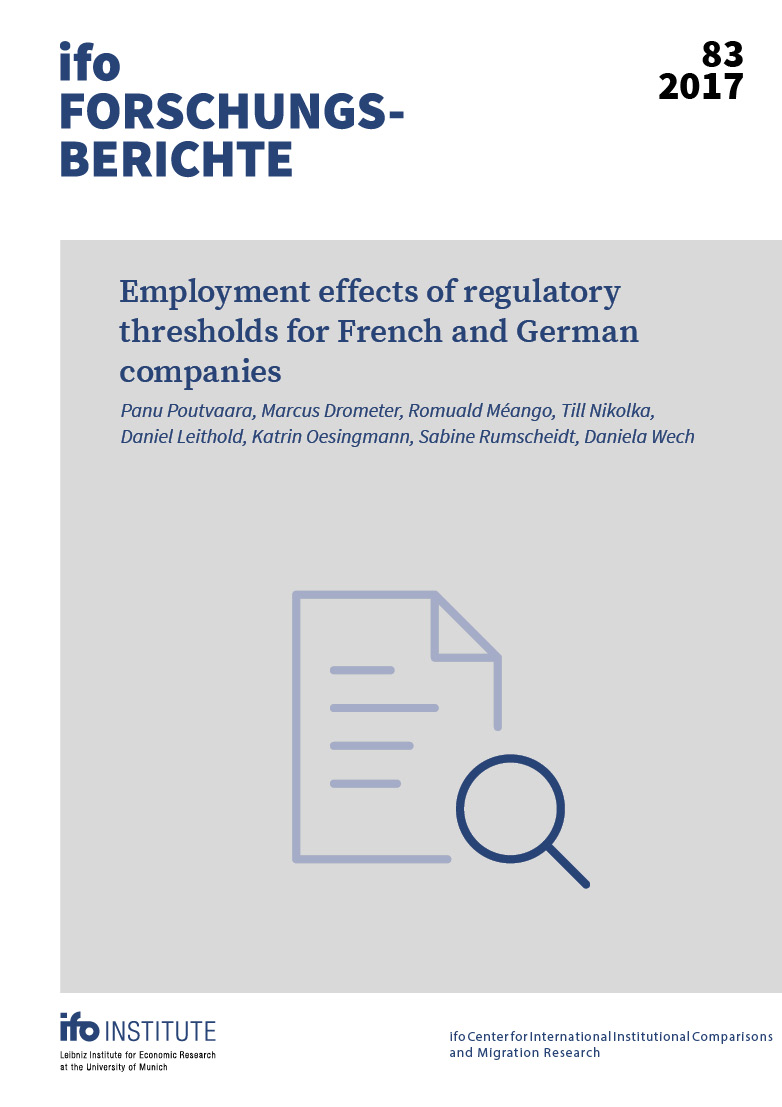Employment effects of regulatorythresholds for French and German companies
ifo Institute, Munich, 2017
ifo Forschungsberichte / 83

This study presents a comparative analysis of regulatory thresholds applicable to firms in France and in Germany. A central question tackled by the report is whether regulations related to limits on firms’ employment appear to prevent French firms from growing above these thresholds. The first part of the report specifies how the obligations of the firms depend on the number of employees. Several thresholds apply to firms in both countries. In France, the main regulations become effective when a firm hires the fiftieth employee. In the empirical analysis on small and medium-sized manufacturing firms in the second part of the report, evidence is found for distorting effects on the firm size distribution only in France. French firms are increasingly concentrated below the regulatory thresholds of 10, 20, and 50 employees. The effects of the 50-employee-threshold on employment growth at the firm level are evaluated in particular. Firms are less likely to hire new workers if the 50-employee-threshold is exceeded. When it comes to different reform proposals in the third part of the report, increasing the thresholds permanently would encourage firm growth in the range between the current and the new threshold. In the longer term, a new distortion would be established at the new threshold. The most efficient way to reduce other distortions at the threshold would be to estimate the costs that such regulations impose on firms, and then offer firms that exceed that threshold a reduction in payroll tax when the threshold is crossed.